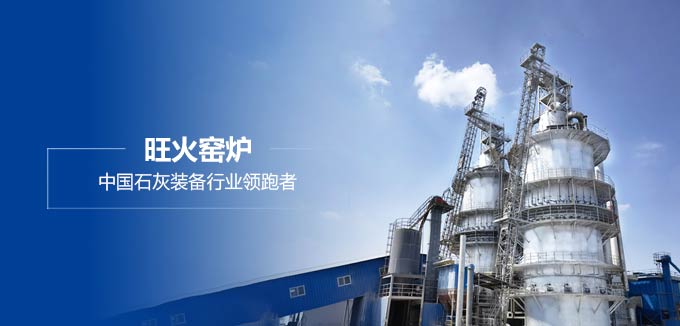Operation adjustment after starting ammonia injection for ultra-low temperature denitrification
- Categories:Industry News
- Author:
- Origin:
- Time of issue:2022-11-29 12:55
- Views:
(Summary description)Operation adjustment after starting ammonia injection for ultra-low temperature denitrification Before injecting ammonia into the ultra-low temperature denitrification reactor, ensure that the dilution air is smoothly injected into the ultra-low temperature denitrification reactor at a dilution air flow rate of 1370 m3/h, and slowly open the NH3 flow control valve. With the continuous increase of NH3 flow rate, the NOX concentration at the outlet of the ultra-low temperature reactor shows a slow downward trend. The trend of NOX concentration change at the denitrification outlet is relatively lagging, and it is necessary to slowly increase the ammonia injection amount. When the NOX concentration at the outlet of the ultra-low temperature reactor drops below 200mg/m3, the ammonia injection should be stopped.
Operation adjustment after starting ammonia injection for ultra-low temperature denitrification
(Summary description)Operation adjustment after starting ammonia injection for ultra-low temperature denitrification
Before injecting ammonia into the ultra-low temperature denitrification reactor, ensure that the dilution air is smoothly injected into the ultra-low temperature denitrification reactor at a dilution air flow rate of 1370 m3/h, and slowly open the NH3 flow control valve. With the continuous increase of NH3 flow rate, the NOX concentration at the outlet of the ultra-low temperature reactor shows a slow downward trend. The trend of NOX concentration change at the denitrification outlet is relatively lagging, and it is necessary to slowly increase the ammonia injection amount. When the NOX concentration at the outlet of the ultra-low temperature reactor drops below 200mg/m3, the ammonia injection should be stopped.
- Categories:Industry News
- Author:
- Origin:
- Time of issue:2022-11-29 12:55
- Views:
Operation adjustment after starting ammonia injection for ultra-low temperature denitrification
Before injecting ammonia into the ultra-low temperature denitrification reactor, ensure that the dilution air is smoothly injected into the ultra-low temperature denitrification reactor at a dilution air flow rate of 1370 m3/h, and slowly open the NH3 flow control valve. With the continuous increase of NH3 flow rate, the NOX concentration at the outlet of the ultra-low temperature reactor shows a slow downward trend. The trend of NOX concentration change at the denitrification outlet is relatively lagging, and it is necessary to slowly increase the ammonia injection amount. When the NOX concentration at the outlet of the ultra-low temperature reactor drops below 200mg/m3, the ammonia injection should be stopped.

In the process of ultra-low temperature denitrification and ammonia injection, the NOx concentration at the inlet of the ultra-low temperature denitrification reactor is 1304 mg/m3, the inlet temperature of the ultra-low temperature denitrification reactor is 316 ℃, the ammonia escape at the outlet of the ultra-low temperature denitrification reactor is controlled at no more than 3 mL/m3, and the oxygen content at the outlet of the ultra-low temperature denitrification reactor is controlled at around 2.5%. When the ammonia injection amount reaches 54.8 m3, the NOX concentration at the outlet of the ultra-low temperature denitrification reactor decreases to 144.6 mg/m3, and the ammonia escape at the outlet of the denitrification reactor is 1.75 mg/m3, resulting in a denitrification efficiency of 88.9%. The ultra-low temperature flue gas denitrification has been operating since August 2015, and the equipment runs smoothly. When the NOx concentration reaches the design specification of 200mg/m3, the NOx removal rate will reach over 85%, and the ultra-low temperature denitrification efficiency is higher.
The change of catalytic bed pressure drop is an important indicator of SCR flue gas denitrification. As the device operates, the FCC catalyst dust contained in the flue gas will adhere to the catalyst bed, causing an increase in the pressure drop of the catalyst bed. During the production process, the dust adsorbed on the catalyst bed can be reduced by steam blowing to avoid an increase in pressure drop due to catalyst bed blockage. Since the start of construction in August 2015, the pressure drop in the catalyst bed has been fluctuating between 0.5 and 0.6 kPa. At the end of 2016, the pressure drop of the catalyst bed slightly increased, but the change was not significant, and there was no blockage of the catalyst bed. The device has been in operation for 34 months, and at the end of operation, the pressure drop of the catalyst bed did not change much compared to the initial startup, meeting the design requirements of a total pressure drop of 150kpa for the three layer catalyst.
From October 27 to November 2, 2015, the main fan was repaired and the backup main fan was replaced for production. Due to the fact that the standby main fan is a centrifugal fan, the outlet pressure of the standby main fan is relatively low. Therefore, the pressure of the heat accumulator should be reduced to 0.15mpa, and the heat storage pressure should be controlled at 0.25mpa during the production of the main engine. During the switching process between the main and standby machines, as the working pressure gradually decreases, the production of NOX at the thyristor inlet increases. The decrease in regeneration pressure leads to a shorter residence time of the flue gas in the regenerated catalyst bed, a decrease in CO and NOX concentrations, thereby reducing the conversion of CO to NOX and increasing the emission of NOX in the flue gas. The NOX concentration at the inlet of the ultra-low temperature denitrification reactor increased from an average of 1200 mg/m3 during host production to over 1533 mg/m3 (the NOX concentration range at the inlet of the ultra-low temperature reactor is 0-1533 mg/m3), resulting in a decrease in the pressure of the heat accumulator, an increase in the NOX concentration in the flue gas, and an increase in the amount of ammonia sprayed for ultra-low temperature denitrification. The denitrification load has increased.
Scan the QR code to read on your phone
Related News
-
Mechanical fossil ash kiln manufacturer: energy-saving lime kiln technology and characteristics
Mechanical fossil ash kiln manufacturer: energy-saving lime kiln technology and characteristics. Energy saving lime kiln is a type of kiln used for calcining limestone to produce quicklime. It is a new type of equipment that uses natural gas or coal gas as raw materials and air as auxiliary gas to heat clinker to produce qualified lime - Introduction to Three Separation High Efficiency Vortex Powder Sorter Manufacturer 01-09
- Mechanical Fossil Ash Kiln Manufacturer: Characteristics of Energy Saving Lime Kilns 12-29
- The powder selection machine of the powder selection machine manufacturer produces lime powder in the finished sand after powder selection 12-29
- What are the working mechanisms of centrifugal powder concentrators introduced by the powder concentrator manufacturer 12-19
Related Products
Vanda Technology
TEL:+86-536-3390655 / 400-869-0655
EMAIL:wdhbkj@163.com / WhatsApp: 8613869629198
ADDRESS:No. 128, Liuheng Road, Chengguan Street, Linqu County, Shandong Province, China

Follow us
© 2022 Shandong Wanda Environmental Protection Technology Co., Ltd All rights Reserved 鲁ICP备16006007号-15 SEO Powered by: 300.cn weifang
© 2022 Shandong Wanda Environmental Protection Technology Co., Ltd
All rights Reserved / SEO
鲁ICP备16006007号-15 Powered by: 300.cn weifang




 13869629198
13869629198

 点击咨询
点击咨询 